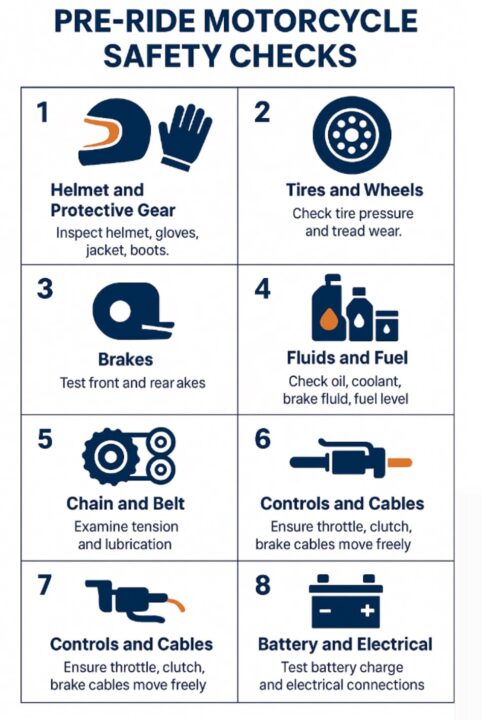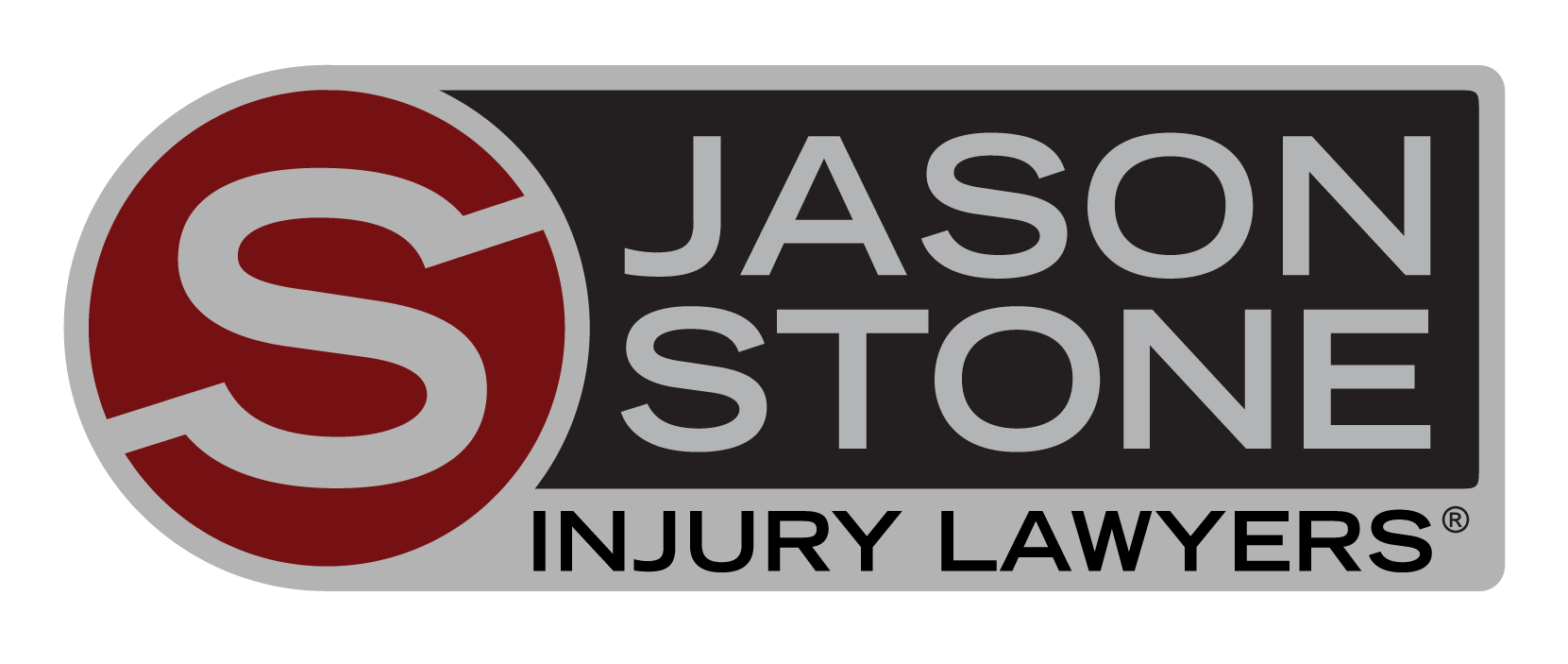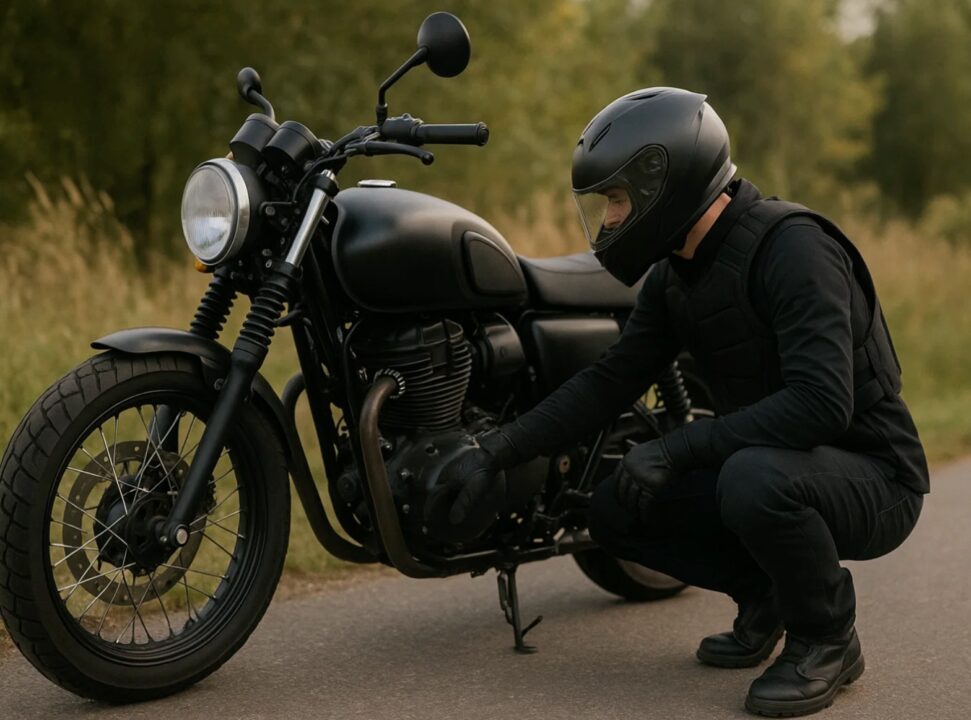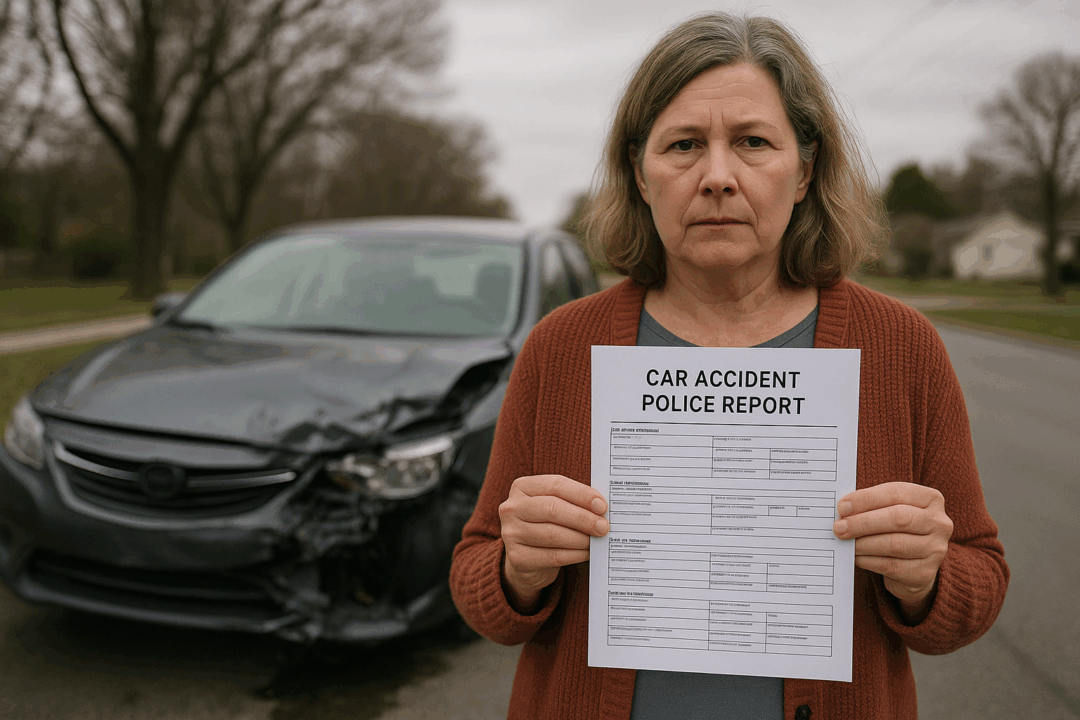May is Motorcycle Safety Awareness Month in Boston, marking the start of peak riding season when accidents typically spike by 15%. Prioritize DOT-approved helmets, protective gear, and pre-ride checks of tires, brakes, and fluids to ensure your safety.
Morning rush hour (approximately 7–9 am) also carries a heightened collision risk as dense commuter and school-zone traffic converge under challenging visibility conditions. Low‐angle sunlight can create intense glare through windshields, momentarily blinding drivers just as streets fill with cars, buses, and cyclists. Many motorists are juggling devices—checking GPS routes or sipping coffee—which can lead to delayed reaction times amid stop‐and‐go congestion.
Boston’s rush hours (3-7 pm) pose the highest risk, so enhance your visibility with reflective gear and LED lights. Local organizations, such as the Boston Motorcycle Coalition, offer free training and safety resources to improve your riding experience.
If you or a loved one is involved in a motorcycle accident, consider consulting Jason Stone Injury Lawyers, who specialize in helping riders recover. For more information, visit our Boston Motorcycle Accident Lawyer page.
Importance of Motorcycle Safety Awareness Month for Boston Riders
While the winter months in Boston typically see fewer motorcycles on the road, May marks the beginning of peak riding season and serves as Motorcycle Safety Awareness Month across the nation. As Boston riders, this timing is vital for you to refresh your safety practices before thoroughly enjoying the open roads.
Recent accident statistics show motorcyclists are 28 times more likely to suffer fatal injuries than car occupants. Protecting yourself starts with wearing proper safety gear—helmets, jackets, gloves, and boots specifically designed for riding.
The sobering truth: riders face 28x higher fatality risk, making proper motorcycle gear not optional, but essential.
Comprehensive rider training courses can sharpen your skills, especially after months off the road. Don’t overlook motorcycle maintenance—checking brakes, tires, lights, and fluids before your first spring ride is indispensable.
Ultimately, Boston’s unpredictable weather necessitates heightened awareness of the weather. Rain, fog, or leftover sand from winter treatments can create hazardous conditions that require adjusted riding techniques.
Boston Motorcycle Accident Trends
Boston’s motorcycle collision rates have increased by 15% over the last three years, with the highest number of accidents occurring between May and September. You’ll notice distinct patterns in these crashes, particularly during rush hour periods and on weekend evenings, when visibility and traffic conditions create a heightened risk. Understanding these trends can help you adjust your riding habits to account for seasonal dangers and anticipate potential hazards during high-risk periods.
Rising Collision Statistics
Despite increased safety campaigns, Boston has experienced a 23% rise in motorcycle collisions over the past two years. These accident statistics reveal a concerning pattern: most crashes occur during weekend evenings when visibility is reduced and traffic is unpredictable.
You’ll find that rider training participation has dropped by 15% during this same period, correlating directly with increased incident rates. Helmet awareness programs report that 34% of injured riders weren’t wearing proper headgear at the time of their accidents.
The city’s transportation department has responded by investing $1.2 million in new safety campaigns targeting both motorcyclists and automobile drivers. Additionally, local dealerships now offer discounts on advanced gear technology, including high-visibility jackets and smart helmets that improve situational awareness in Boston’s challenging urban environment.
Seasonal Accident Patterns
Seasonal accident patterns reveal crucial timing factors that every Boston motorcyclist should know. The spring months, especially May, experience a significant uptick in collisions as riders return to the roads after winter storage.
Add in damp pavement from overnight dew or lingering frost in cooler months, and the combination of distracted driving, cramped roadways, and slick surfaces makes the morning commute one of the most accident-prone times of day.
You’ll notice that accidents peak during late afternoons (3-7 pm) when traffic congestion combines with visibility challenges. Summer brings additional risks from thunderstorms and increased tourism traffic, while fall presents hazardous conditions with leaf-covered roads and earlier sunsets.
Weather preparedness becomes critical during these transitions; always check the forecasts before riding. Prioritize motorcycle maintenance after storage periods to ensure brakes and tires perform optimally. Refresher rider training courses are particularly valuable in early spring when skills may be rusty. Accident prevention depends on recognizing these seasonal vulnerabilities and adapting accordingly. Never compromise on safety equipment, regardless of season or ride duration.
Essential Safety Gear Every Boston Motorcyclist Needs
When riding in Boston, you’ll need crucial gear, starting with a DOT-approved helmet to protect your brain in any collision. Your safety arsenal should also include armored jackets that shield vital organs during falls and protective gloves that preserve hand function in the event of an accident. Don’t forget to enhance your visibility with reflective gear so drivers can spot you easily during Boston’s notoriously foggy mornings and dark evenings.
DOT-Approved Helmets Matter
Why gamble with your life when a DOT-approved helmet can reduce your risk of fatal head injury by 37%? Look for the DOT certification sticker on the back of any helmet you purchase—this guarantees it meets federal safety standards for impact protection.
Consider various helmet styles based on your riding needs: full-face helmets provide maximum protection, while modular helmets offer convenience without completely sacrificing safety. Whatever style you choose, proper helmet fit is non-negotiable—it should feel snug but not painful, with no movement when you shake your head.
Maintain your helmet’s protective capabilities by cleaning it regularly with mild soap and water. Replace it immediately after any crash or every five years, as materials degrade over time. Remember, helmet safety isn’t just about compliance—it’s about getting home safely.
Armored Jackets Save Lives
Beyond helmets, armored jackets provide vital protection that can mean the difference between minor injuries and life-threatening trauma during a crash.
When selecting a jacket, focus on impact resistance in crucial areas, such as the shoulders, elbows, and back. Look for CE-rated armor that meets safety standards for maximum protection. The material durability of leather or reinforced textile provides additional abrasion resistance during slides.
| Feature | Benefit | What to Look For |
| CE-rated armor | Absorbs impact | Level 1 or 2 certification |
| Abrasion-resistant material | Prevents road rash | Leather or Cordura fabric |
| Visibility elements | Increases driver awareness | Reflective piping/panels |
Don’t compromise on quality—your jacket is your first line of defense for injury prevention after your helmet. Invest in proper gear that fits well and meets recognized safety requirements.
Protective Gloves Prevent Injuries
Human instinct prompts us to extend our hands during a fall, making protective gloves an indispensable component of your motorcycle safety gear. While riding through Boston’s diverse weather conditions, invest in gloves that offer a proper fit and sizing to ensure dexterity and control of your bike’s controls.
Look for gloves with impact-resistant features, such as carbon fiber knuckle protection and padded palms, which absorb shock during accidents. Material durability matters—leather offers excellent abrasion resistance while synthetic options provide flexibility.
Don’t sacrifice glove comfort for protection; modern designs offer both. For Boston’s unpredictable weather, consider waterproof features that keep hands dry during sudden downpours without compromising grip.
Visibility Through Reflective Gear
Being visible to other road users represents the fundamental difference between safety and danger for motorcyclists steering Boston’s busy streets. Reflective gear dramatically enhances your visibility, especially during dawn, dusk, and nighttime riding conditions when motorcycle accidents are most prevalent.
Don’t compromise on high-visibility clothing and lighting accessories. Your life depends on them.
- Wear a reflective vest that transforms you from invisible to unmistakable on dark streets
- Apply retroreflective tape to your helmet, jacket, and motorcycle for 360-degree visibility
- Invest in LED lighting accessories that activate automatically when brightness diminishes
- Choose riding gear with built-in reflectors at shoulders, elbows, and back for maximum visibility enhancement
Pre-Ride Checklist: Preparing Your Bike for May in Boston
Before hitting Boston’s streets this May, ensure your motorcycle is in prime condition by checking tire pressure, preparing for unpredictable weather, inspecting fluid levels, and testing your brake system. You’ll need to verify that the tire pressure meets the manufacturer’s specifications, as improper inflation markedly increases your risk of accidents during spring rides. Don’t forget to examine your coolant, oil, and brake fluid levels while also performing a complete brake test—your life depends on these vital safety measures.
Tire Pressure Check
Why is tire pressure so vital for your Boston motorcycle rides in May? Spring’s temperature fluctuations significantly impact your tire pressure maintenance, potentially compromising your safety on rain-slicked roads. Proper inflation ensures ideal handling, traction, and tire longevity during your daily commute or weekend excursions.
Check your tires before every ride with these crucial steps:
- Measure pressure when tires are cold using a quality digital tire pressure tool
- Inflate to the manufacturer’s correct inflation levels, adjusting for passenger and cargo weight
- Examine tire tread depth using the penny test—insert Lincoln’s head first; if you see his entire head, replace immediately.
- Inspect sidewalls for cracks or bulges that indicate it’s time for seasonal tire changes
Never compromise on tire maintenance—it’s your vital connection to the road.

Essential Weather Preparations
May in Boston brings unpredictable weather patterns that demand more than just proper tire maintenance. Before each ride, check local forecasts and prepare for rapid changes in conditions that can create serious weather hazards.
Pack clothing layers that you can add or remove as temperatures fluctuate throughout the day. Always carry quality rain gear that’s easily accessible—you’ll need a waterproof jacket, pants, and gloves when spring showers appear suddenly. Don’t forget wind protection for your neck and chest, as Boston’s coastal breezes can markedly lower your body temperature even on sunny days.
Proper temperature management prevents distractions and fatigue that compromise your safety. Consider installing handguards or heated grips if you’re planning longer rides during cooler mornings and evenings, especially near the harbor where temperatures drop quickly.
Fluid Levels Inspection
Regularly inspecting your motorcycle’s fluid levels is a crucial safety measure before hitting Boston’s busy spring roads. As you prepare to serve fellow riders and motorists with your safe riding practices, confirm you’ve completed this necessary fluid maintenance checklist.
- Check oil levels when the engine is cool – proper lubrication prevents catastrophic engine failure and could save your life in high-traffic situations.
- Inspect coolant levels to prevent overheating during unexpected Boston traffic jams – a breakdown leaves you vulnerable on busy roads.
- Verify brake fluid levels are at recommended heights – compromised braking power can mean the difference between stopping safely and a collision.
- Monitor fuel levels before each ride – running out of fuel on the expressway creates dangerous situations for everyone sharing the road.
Brake System Test
Before beginning any motorcycle journey through Boston’s spring streets, a thorough brake system test could save your life when unexpected obstacles appear. Start by checking your brake fluid levels in both reservoirs—they should be between the minimum and maximum lines. Inspect your brake pads for wear; replace them immediately if they’re thinner than 2mm.
Next, examine your brake calipers for leaks or corrosion and ensure they move freely when engaged. Your brake rotors should be free of cracks, warping, or excessive scoring. Apply both front and rear brakes separately while rolling the bike forward to confirm proper resistance.
Finally, check for brake adjustment. Your brake lever should have about an inch of free play before engagement. If it feels spongy or goes to the handlebars, you’ll need immediate servicing.
Sharing the Road: Tips for Boston Drivers and Motorcyclists
Boston’s congested streets present unique challenges for both motorcyclists and drivers to steer safely. When sharing the road, mutual respect and awareness become crucial for everyone’s protection. Proper lane positioning helps motorcyclists maintain visibility, while drivers should always check blind spots before changing lanes.
Distracted driving poses a deadly threat to motorcyclists. Even a momentary glance at your phone can have fatal consequences on our busy streets. Always use your signals properly to communicate your intentions clearly to everyone around you.
- Check twice for motorcycles – They’re smaller and easier to miss, especially in Boston’s notorious blind corners
- Respect lane sharing – Give motorcyclists space when they legally filter through traffic
- Practice proper parking etiquette – Don’t block motorcycle-designated spaces
- Maintain extra distance – Motorcycles can stop quicker than cars, potentially causing rear-end collisions
Best Scenic Routes for Safe Riding Around Boston in May
While celebrating Motorcycle Safety Awareness Month, you’ll find three exceptional routes around Boston that combine scenic beauty with safe riding conditions. The Cape Ann Loop offers coastal views and less congested roads, while the Charles River Parkway provides well-maintained surfaces with moderate speeds ideal for enjoying spring foliage. For those seeking elevation changes and curves to practice your defensive riding techniques, the Blue Hills Reservation presents winding roads with clear sightlines and designated pullover areas for rest breaks.
Cape Ann Loop
The breathtaking Cape Ann Loop offers motorcyclists one of New England’s most picturesque coastal rides while providing enough technical variety to keep your skills sharp. This 35-mile route winds through charming coastal towns where proper motorcycle maintenance is vital for the varying road conditions you’ll encounter.
Before tackling this route, remember:
- Complete a rider training course to handle the loop’s challenging curves near Gloucester
- Wear full safety gear regardless of temperature—coastal weather shifts rapidly
- Check accident statistics to identify higher-risk sections, particularly at Rocky Neck intersections
- Develop weather awareness habits as fog can reduce visibility dramatically on shoreline stretches
You’ll experience both the joy of serving your fellow riders by modeling safe practices and the satisfaction of navigating this beautiful coastal gem responsibly.
Charles River Parkway
Flowing along Boston’s urban edge, the Charles River Parkway offers motorcyclists a serene alternative to Cape Ann’s coastal drama, while maintaining exceptional safety standards during May’s mild weather. You’ll find smooth pavement ideal for practicing fundamental riding techniques, such as proper lane positioning and controlled cornering.
Before heading out, complete your motorcycle maintenance checklist—brakes, tires, and fluid levels demand attention after winter storage. Safety courses often recommend this route for its predictable traffic patterns, making it perfect for riders developing confidence.
The parkway’s tree-lined sections can present weather challenges when afternoon showers create wet surfaces. Wear moisture-wicking gear with customization options, such as waterproof gloves and anti-fog visors, to maintain visibility and control. Early morning rides offer the most peaceful experience and prime conditions for both new and experienced riders.
Blue Hills Reservation
Nestled just south of Boston, Blue Hills Reservation offers motorcyclists a perfect balance of challenging terrain and breathtaking vistas during Motorcycle Safety Awareness Month. Before heading to these winding roads, verify your motorcycle maintenance is up-to-date and you’ve completed proper rider training for handling elevation changes.
When exploring Blue Hills’ scenic routes, remember:
- Prepare your documentation – Carry current licensing requirements and insurance policies with you at all times
- Respect local communities – Follow noise regulations to maintain goodwill with residents
- Monitor weather conditions – Spring in Blue Hills brings unpredictable changes that can affect road safety
- Travel in groups – Riding with experienced partners increases visibility and assists if needed
You’ll find the reservation’s 125 miles of trails and roadways offer excellent practice for developing advanced safety skills.
Spotlight on Boston Organizations Promoting Motorcycle Safety
Several Boston-based organizations work ceaselessly throughout the year to promote motorcycle safety, not just during Motorcycle Safety Awareness Month.
Boston Motorcycle Coalition offers free rider training workshops every second Saturday, focusing on accident prevention techniques and emergency tactics. You’ll find their instructors at community events distributing safety gear information pamphlets.
The Riders Foundation hosts monthly motorcycle maintenance clinics where you’ll learn proper brake inspection, tire pressure checking, and chain adjustment—critical skills that prevent mechanical failures on the road.
The Massachusetts Motorcycle Association runs the “Gear Up” program, providing new riders with discounted helmets and protective clothing. Their volunteer staff set up information booths at traffic intersections, reminding drivers to watch for motorcyclists.
When you participate in these organizations’ initiatives, you’re not just protecting yourself but advocating for all riders’ safety. Contact them directly to volunteer or attend their next safety workshop.
Resources and Support Networks for Boston Motorcycle Enthusiasts
Boston’s motorcycle community extends well beyond the safety organizations mentioned above, offering a wealth of resources you’ll find valuable throughout your riding journey. You can tap into rider training programs that’ll sharpen your skills and connect with community riding groups that share your passion for safe motorcycling.
Boston riders thrive when connected—tap into our vibrant community for skills, support, and shared safety commitments.
- Local repair shops provide more than just maintenance—they’re knowledge hubs where you’ll learn proper motorcycle care and safety checks from experienced mechanics.
- Motorcycle club events offer opportunities to build relationships with fellow enthusiasts who’ll support your safety commitment.
- Motorcycle safety workshops deliver specialized training on everything from collision avoidance to proper gear selection.
- Community riding groups organize regular rides where you’ll practice safety protocols in real-world conditions.
Don’t ride alone—literally or figuratively. These networks ensure you’ll always have resources to turn to as you serve yourself and others through safer riding practices.
As May’s Motorcycle Safety Awareness Month comes to a close, remember that safety doesn’t end with the month. Always wear your protective gear, perform regular bike inspections, and stay visible on Boston’s busy streets. You’re responsible for your safety and the safety of others. Connect with local motorcycle safety organizations to continue building your skills year-round. Ride smart, stay alert, arrive alive.
Not Trusting What You’re Being Told?
Better Phone Stone
800-577-5188
 START MY NO OBLIGATION CONSULTATION
START MY NO OBLIGATION CONSULTATION











